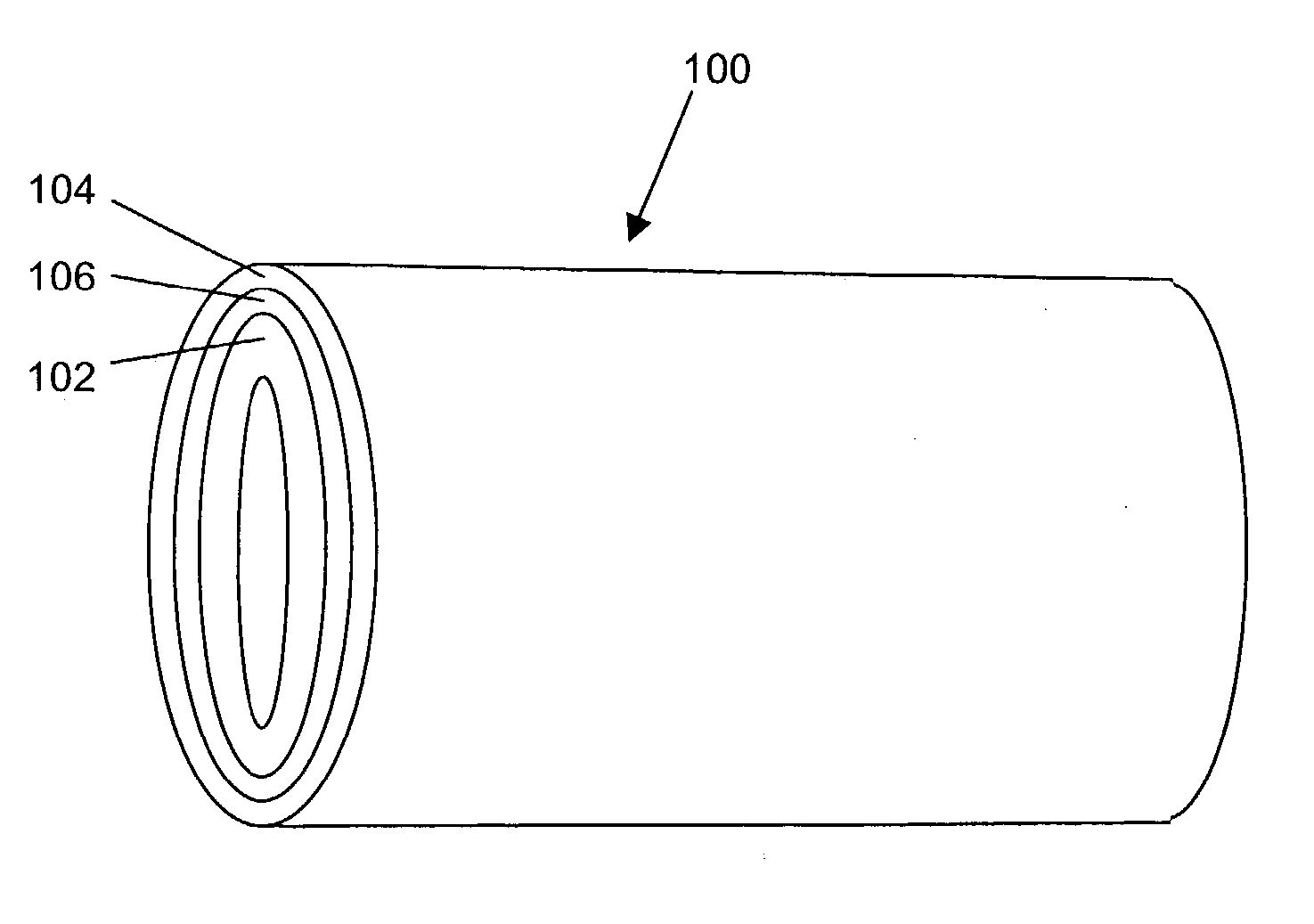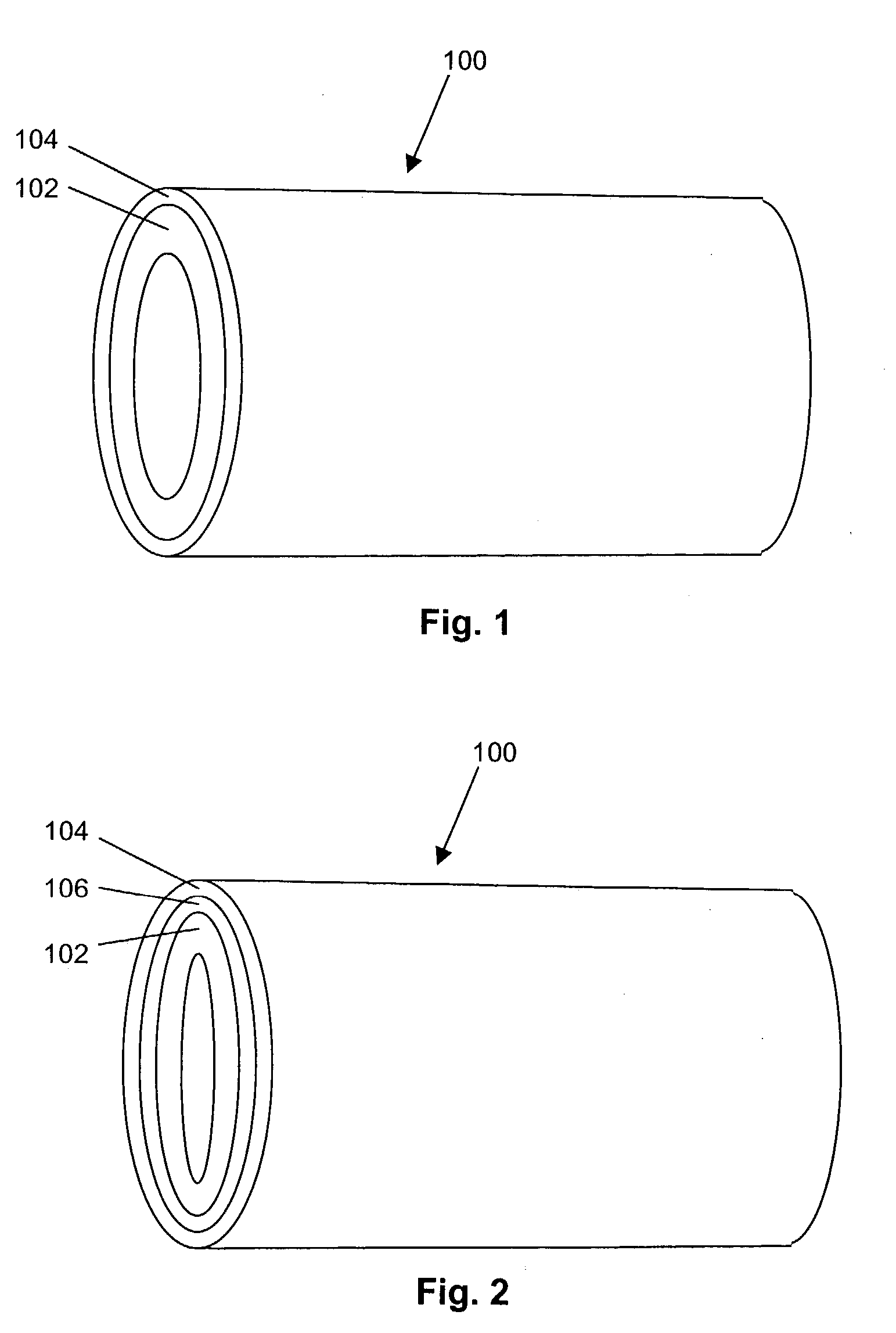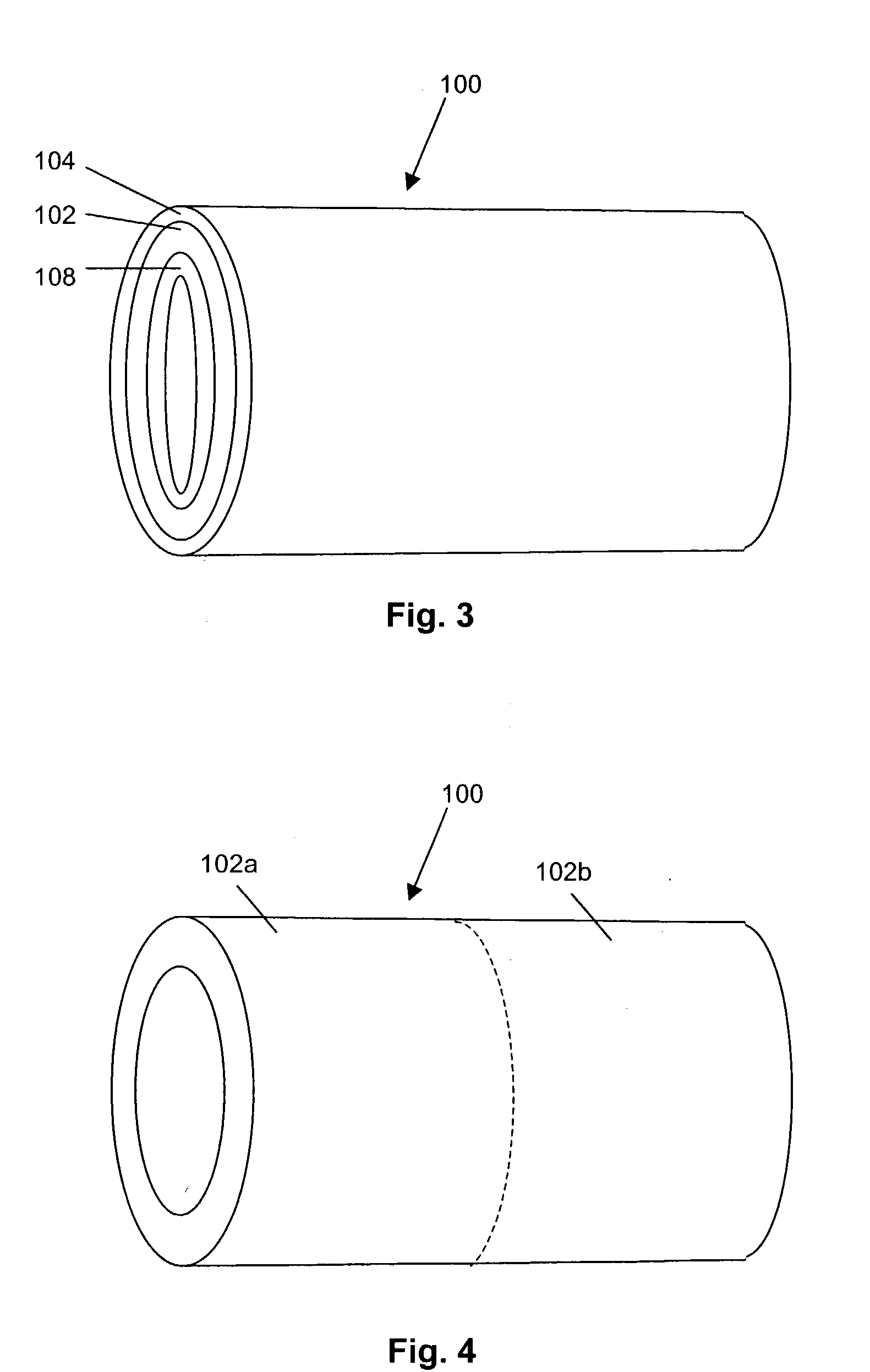Implantable or insertable medical devices for controlled drug delivery
a medical device and controlled drug technology, applied in the direction of prosthesis, catheter, blood vessel, etc., can solve the problems of stents being associated with pain and discomfort in the bladder and flank area, many therapeutic agents are unstable, and patients are commonly associated with some degree of discomfort or pain,
- Summary
- Abstract
- Description
- Claims
- Application Information
AI Technical Summary
Benefits of technology
Problems solved by technology
Method used
Image
Examples
Embodiment Construction
[0107] A single-layer matrix polymer structure is formed from a mixture containing 65.75 wt % and 52.75 wt % respectively of Elvax.RTM. 460, an ethylene vinyl acetate copolymer having a 18 wt % vinyl acetate content available from DuPont, (b) 26 wt % of bismuth subcarbonate as a radio-opacifying agent, (c) 8 wt % and 21 wt %, respectively, of ketorolac tromethamine, available from Spectrum Chemicals & Laboratory Products, as a non-steroidal anti-inflammatory drug, and (d) 0.25% blue pigment.
[0108] The bismuth subcarbonate, EVA copolymer, and blue color are precompounded at 350.degree. (177.degree. C.), for example, in a Haake twin screw extruder.
[0109] Ketorolac is then mixed with the pre-compounded resin, and the resulting mixture is compounded at 215.degree. F. (102.degree. C.) using a Haake twin screw extruder at a reduced shear rate (<30% of full screw power). About 6-8 inches of the length of extruded rod (instead of 6-8 feet of extruded length, which is more typical) is guided...
PUM
| Property | Measurement | Unit |
|---|---|---|
| temperatures | aaaaa | aaaaa |
| temperatures | aaaaa | aaaaa |
| temperatures | aaaaa | aaaaa |
Abstract
Description
Claims
Application Information
 Login to View More
Login to View More - R&D
- Intellectual Property
- Life Sciences
- Materials
- Tech Scout
- Unparalleled Data Quality
- Higher Quality Content
- 60% Fewer Hallucinations
Browse by: Latest US Patents, China's latest patents, Technical Efficacy Thesaurus, Application Domain, Technology Topic, Popular Technical Reports.
© 2025 PatSnap. All rights reserved.Legal|Privacy policy|Modern Slavery Act Transparency Statement|Sitemap|About US| Contact US: help@patsnap.com



